Do you want to visit one of the best Japanese gardens in Europe? Japanse Tuin Hasselt (Japanese Garden of Hasselt) serves a slice of Japanese culture within an easy day trip from Brussels, Belgium.
Make the most of your day there. Get the lowdown on how to visit the Japanese Garden of Hasselt and what to expect.

A Beginner’s Guide to Japanese Gardens
A Japanese garden attempts to recreate the natural landscape in miniature. There are three core elements: stone, water and plants.
Weathered rocks are carefully placed in groupings to represent heaven, earth and man, with the larger ones symbolising hills and mountains.
Ponds are a central feature of most Japanese gardens and symbolise life, constant change and transformation. In dry gardens, ponds and waterfalls are symbolised by raked gravel, sand and upright stones.
Plants of all kinds are used in Japanese gardens, but moss is the most important. Moss suggests the passing of time and brings harmony to the garden’s elements.
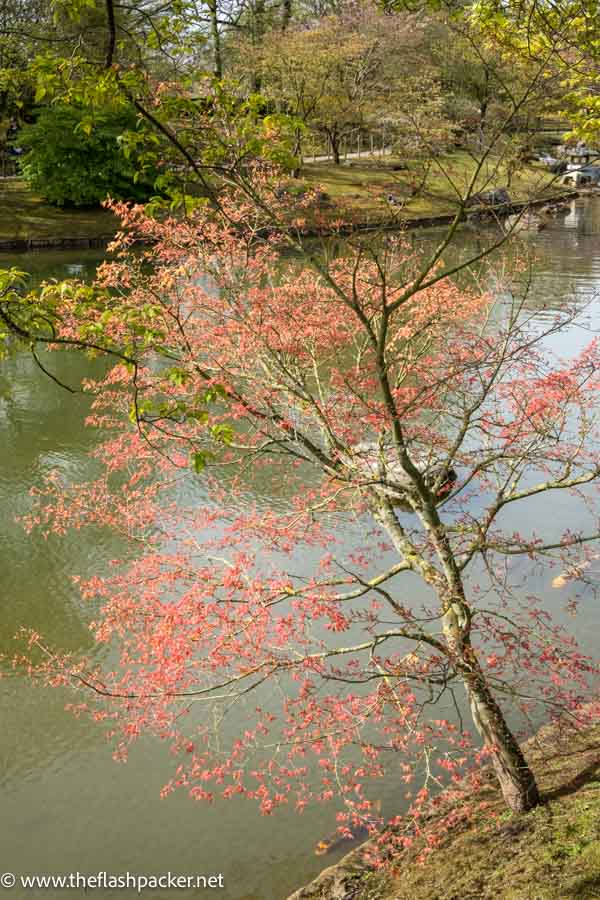
The appeal of a Japanese garden lies in its simplicity. By avoiding the extravagance of many Western gardens it is an oasis of serenity and tranquillity, providing a space for reflection and meditation in our often busy lives.
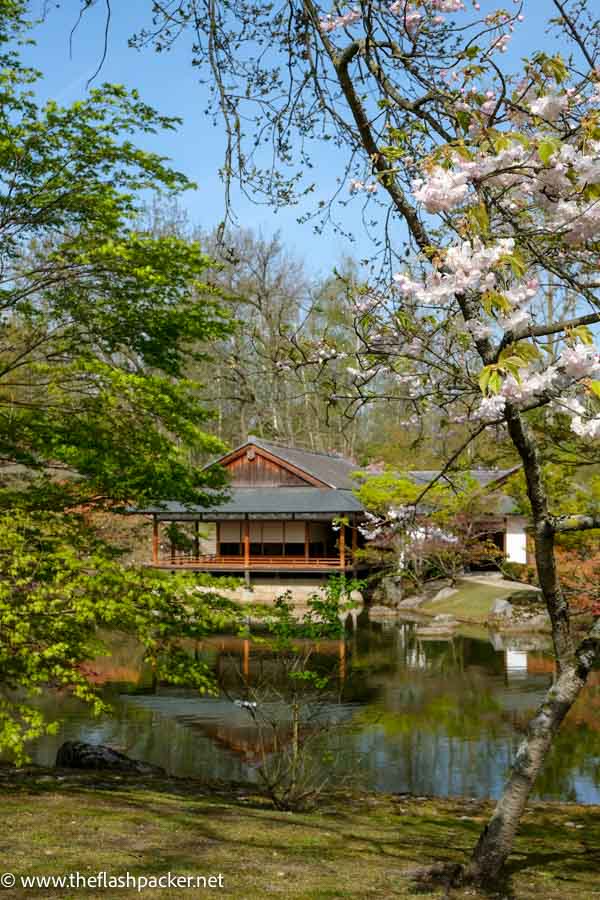
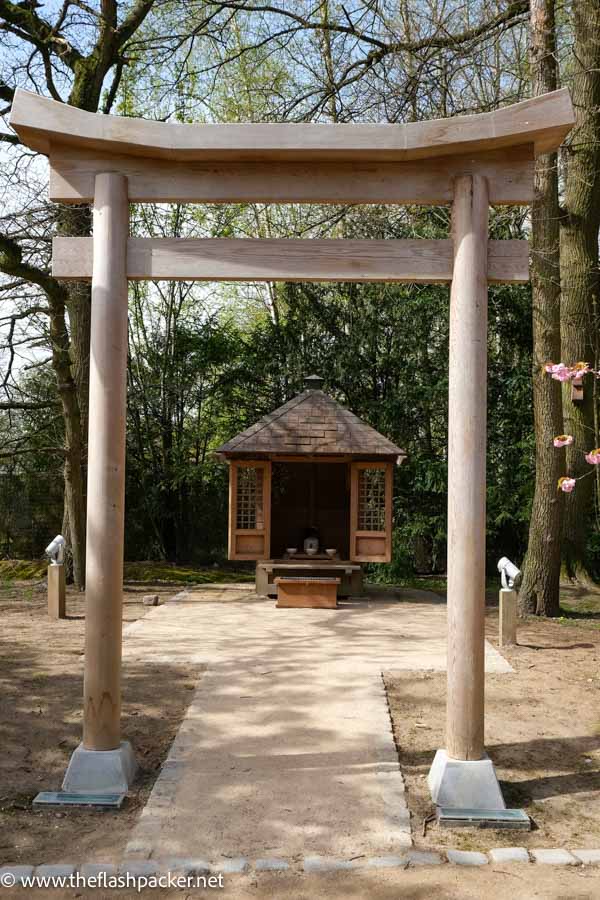
The Japanese Garden of Hasselt is the largest of its kind in Europe
Based on a traditional 17th-century garden, Japanse Tuin Hasselt spans 2.5 hectares (6 acres). It is a symbol of friendship between Hasselt and the city of Itami, which is close to the city of Osaka in Japan.
Designed by Japanese architect Takayuki Inoue, the garden opened in 1992 to introduce Japanese culture to the Belgian city. In return, Hasselt gifted the people of Itami a tower carillon, which resounds across the city during an annual concert.
Visiting Japanse Tuin Hasselt
A numbered route takes you on a self-guided tour of the garden. Whilst you can complete a circuit in as little as 30 – 40 minutes, it’s very easy to spend much longer here. I spent 90 minutes here and could have lingered longer.
From the entrance, a path leads you to a zig-zag wooden bridge (Yatsuhashi) and the Dragon Gate Waterfall. Drawing inspiration from the 14th-century garden of the Tenryu-ji temple in Kyoto, this symbolises the division between life and death.
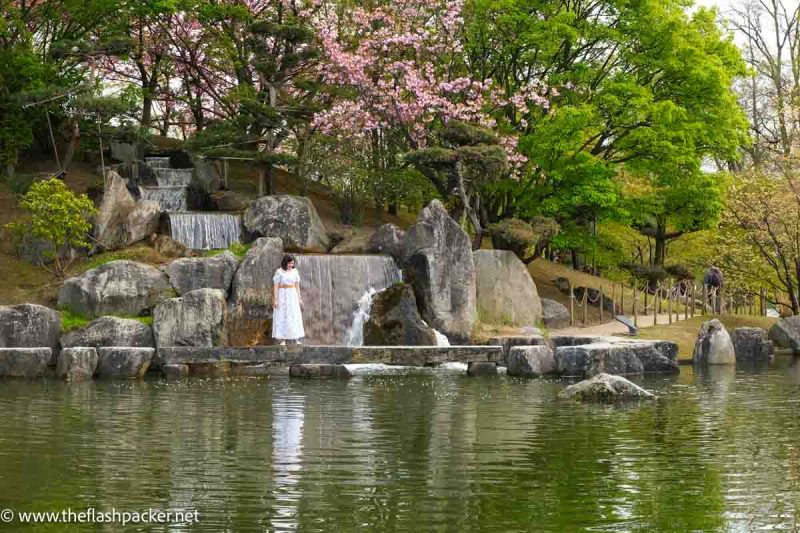
Water plays a big role in this garden. It tumbles down in torrents at the waterfall, ending quietly in a still pond to the west, symbolising the different currents of our own lives.
Passing a group of manicured pine trees, you are now treated to a wonderful view of the Ceremonial House reflected in the pond. Like the adjacent tea house, it is inspired by traditional 17th-century houses.
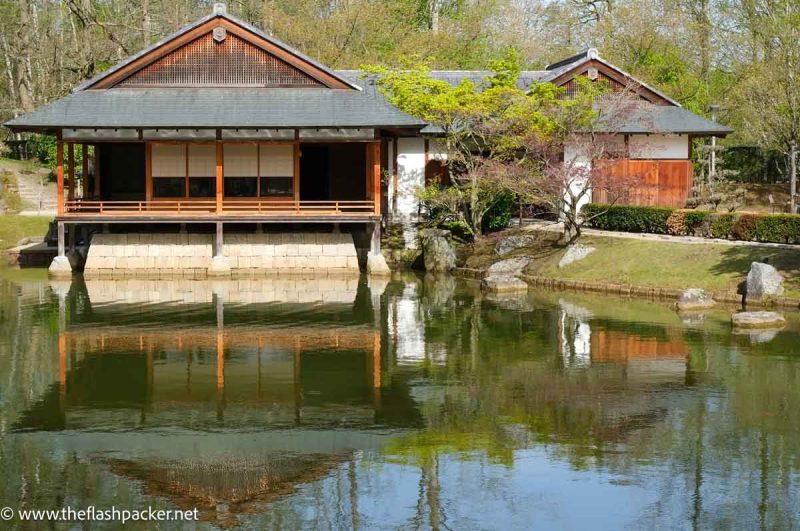
Walking down the stairs to the pebble beach, koi carp swim to the shore to greet you.
The koi is the national fish of Japan and is the symbol of happiness and prosperity. This Japanese garden is home to around 190 different koi.
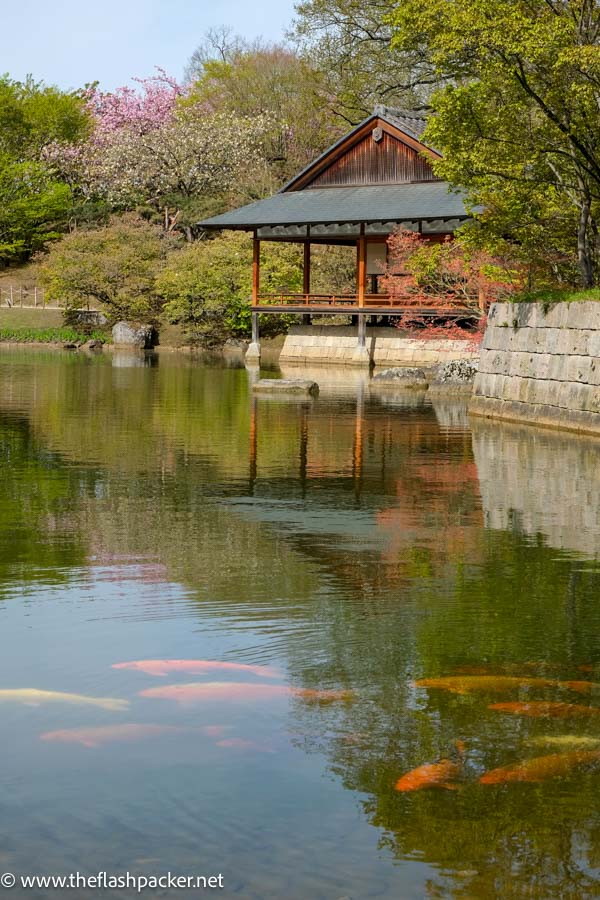
Adjacent to the pebble beach are the superstars of the Japanse Tuin Hasselt: the cherry trees.
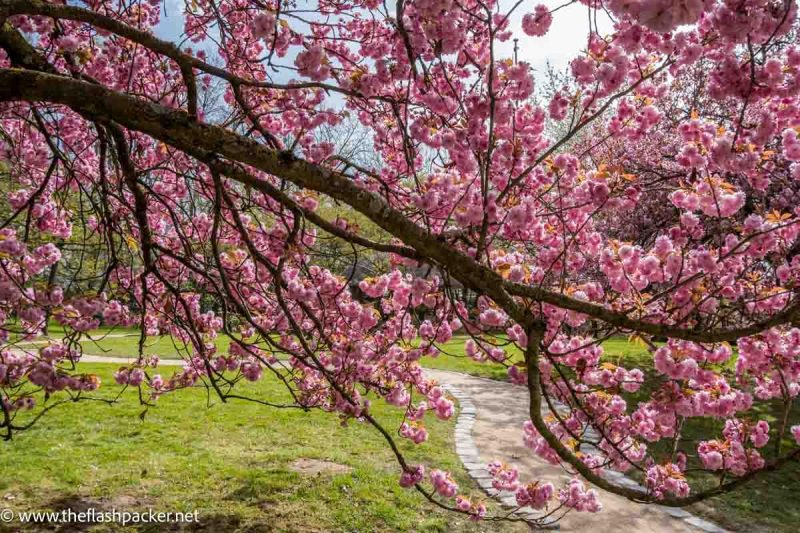
Regarded as a symbol of beauty, vitality and renewal, cherry blossom (sakura) is a national obsession in Japan. There are 225 Japanese sakura trees in the Japanese Garden.
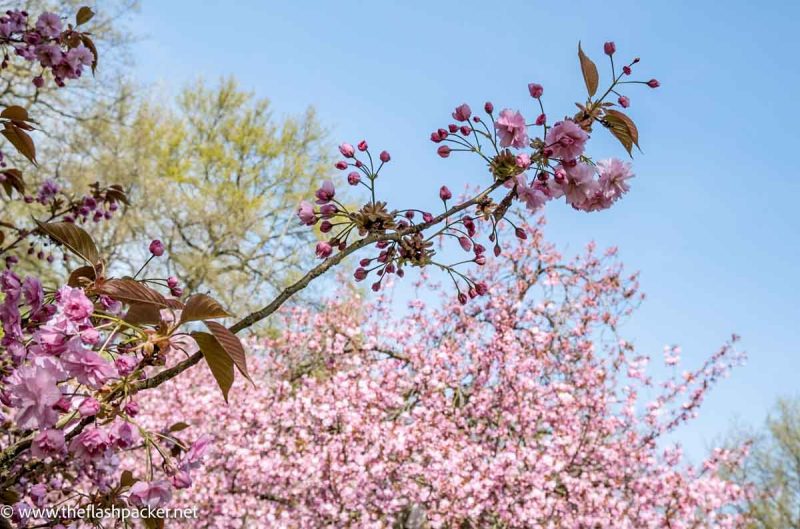
Your visit to the garden will be frequently punctuated by the ringing of its peace bell. This was inaugurated in 2016 to celebrate 150 years of diplomatic relations between Belgium and France.
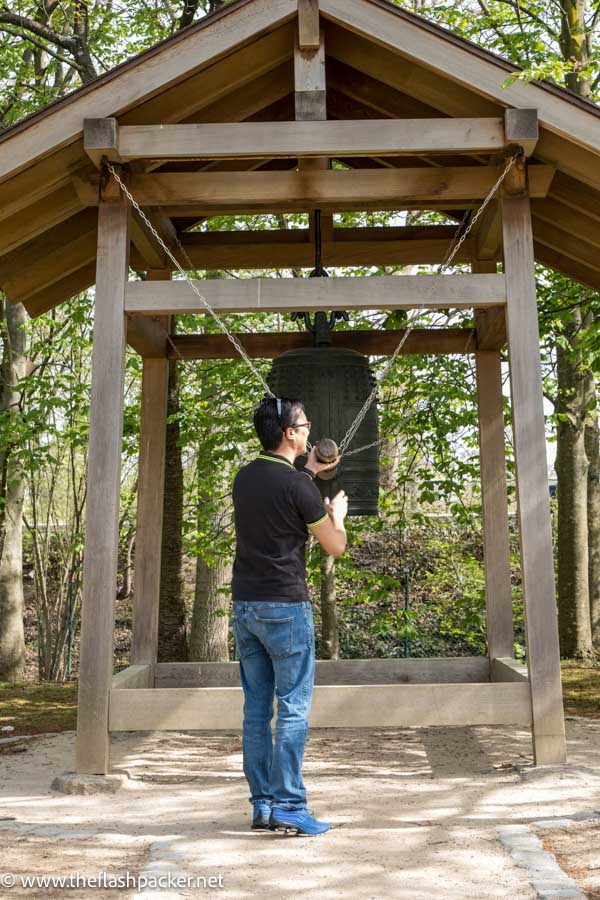
On the opposite side of the path is a small shintō shrine.
In Japan, you’ll find these in gardens and temples, and along roads and mountain paths. Japanese people take a moment to stop, clap their hands twice, bow, give thanks to the gods or make a wish, and donate a little money.
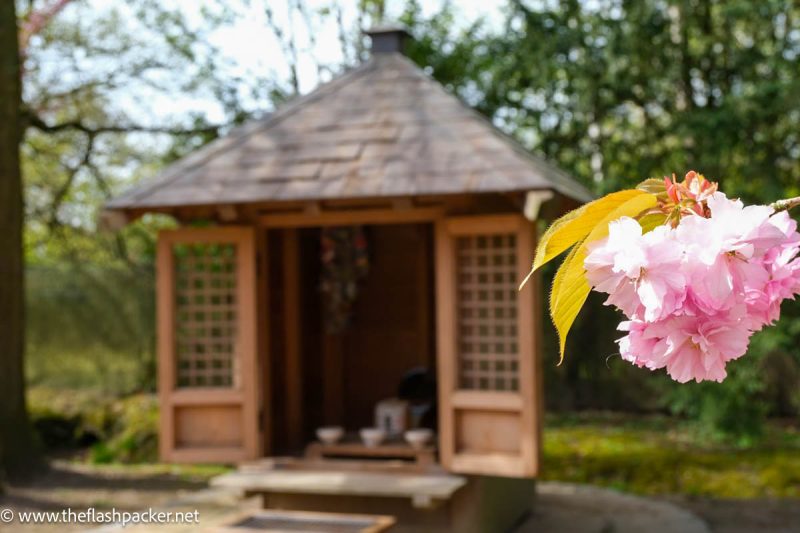
From here, complete your visit by crossing the graceful footbridge to take a closer look at the Ceremonial House and tea house.
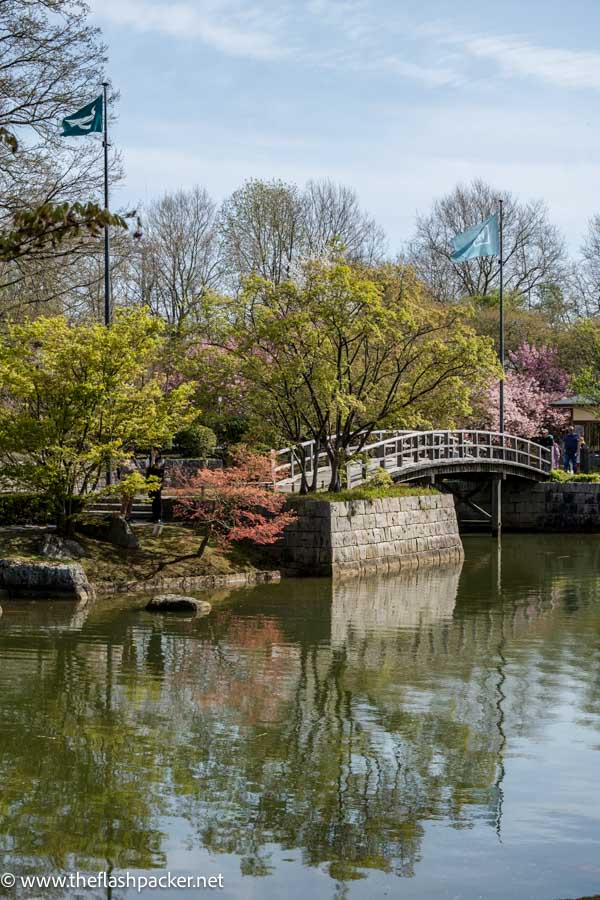
Plan Your Visit
The best time of year to visit Japanse Tuin Hasselt
Hasselt’s Japanese Garden is wonderful any time of year but if you visit between April and May you should see those magnificent cherry trees in full bloom. The reward for a visit in October is the fall foliage.
Getting to the Japanese Garden of Hasselt from Brussels
Trains leave Brussels around twice an hour for Hasselt. The average journey time is around 80 minutes.
The garden is located at Gouverneur Verwilghensingel 15, 3500 Hasselt. It’s an easy 20-minute walk from Hasselt town centre but it is also served by the following buses: 11, 20a, 36 and 45
If you are driving, you can park for free in the garden’s car park on Gouverneur Verwilghensingel.
Opening hours
Japanse Tuin Hasselt is open from March to October from Tuesday to Sunday, 10 am to 5 pm (last admission at 4.30 pm). It is closed on Mondays
Ticket price
The adult ticket price in 2024 is €6. Concessions are available. Admission is free for visitors in cosplay (Japanese pop culture) and traditional Japanese attire.
Booking in advance is not necessary. You can buy your ticket at the Japanese Garden box office.
More information on opening hours and ticket prices is here.
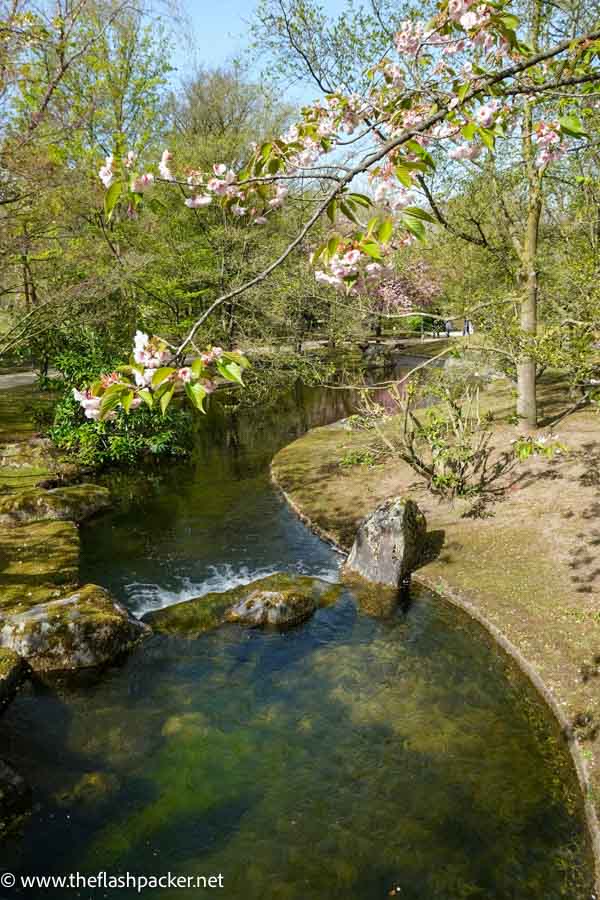
Eating and drinking
If you visit the Japanese Garden during the week, there are only a few vending machines selling hot and cold drinks and snacks. At the weekend and during events, there are further drinking and eating options.
In true Japanese style, picnics under the cherry trees or at one of the tables are welcomed.
Other events at the Japanese Garden of Hasselt
90-minute guided tours are offered every Sunday and public holiday at 3 pm. Purchase tickets at the entrance.
The garden also offers tea demonstrations, tai chi for kids, origami, bento or sushi workshops and ikebana and calligraphy courses. Check the website for further information.
Enjoy your visit to Hasselt’s Japanese garden
Hasselt was one of my favourite places to visit during my week in Belgium. Why not combine your visit to the Japanese garden with Jenevermuseum Hasselt? Jenever is a type of Belgian gin and the Hasselt Jenever Museum is educational and fun in equal measure.
If you have found this guide helpful and are planning further travel in Belgium, take a peek at my other articles (here’s my guide to Hasselt for starters)
Brussels and Ghent are terrific bases for exploring Belgium by train. If you are a chocoholic, spend a day hunting for the best chocolate in Bruges.
Consider some of its lesser-touristed gems (Mechelen was wonderful). I also loved my day in Leuven, which is home to De Kruidtuin Leuven, the oldest botanical garden in Belgium.
Happy travels!

About Bridget
Bridget Coleman has been a passionate traveller for more than 30 years. She has visited 70+ countries, most as a solo traveller.
Articles on this site reflect her first-hand experiences.
To get in touch, email her at hello@theflashpacker.net or follow her on social media.
